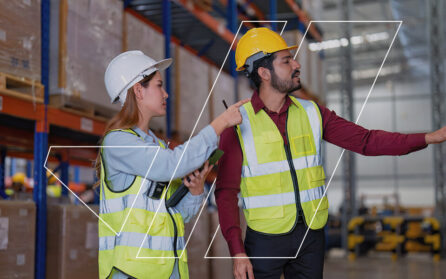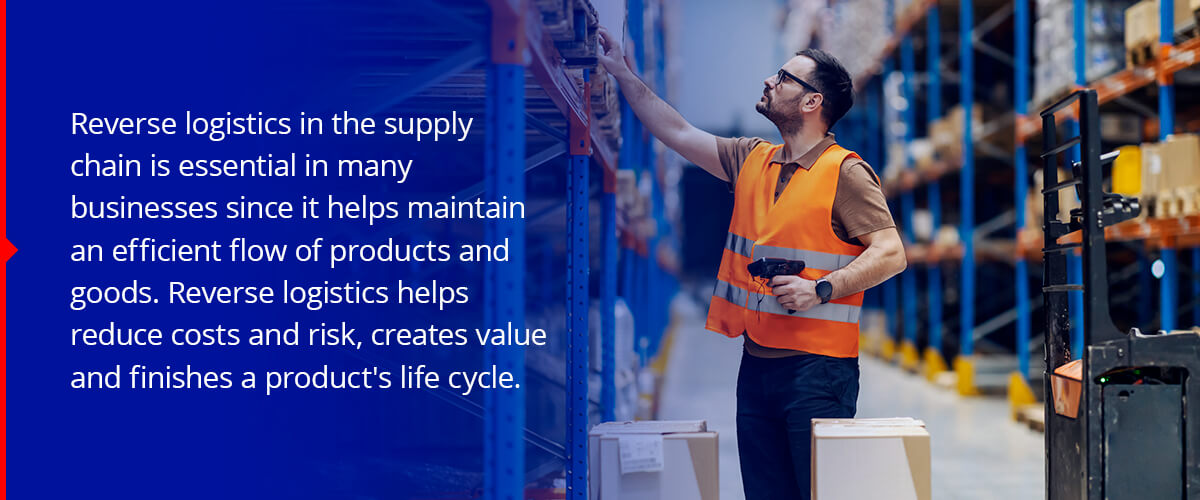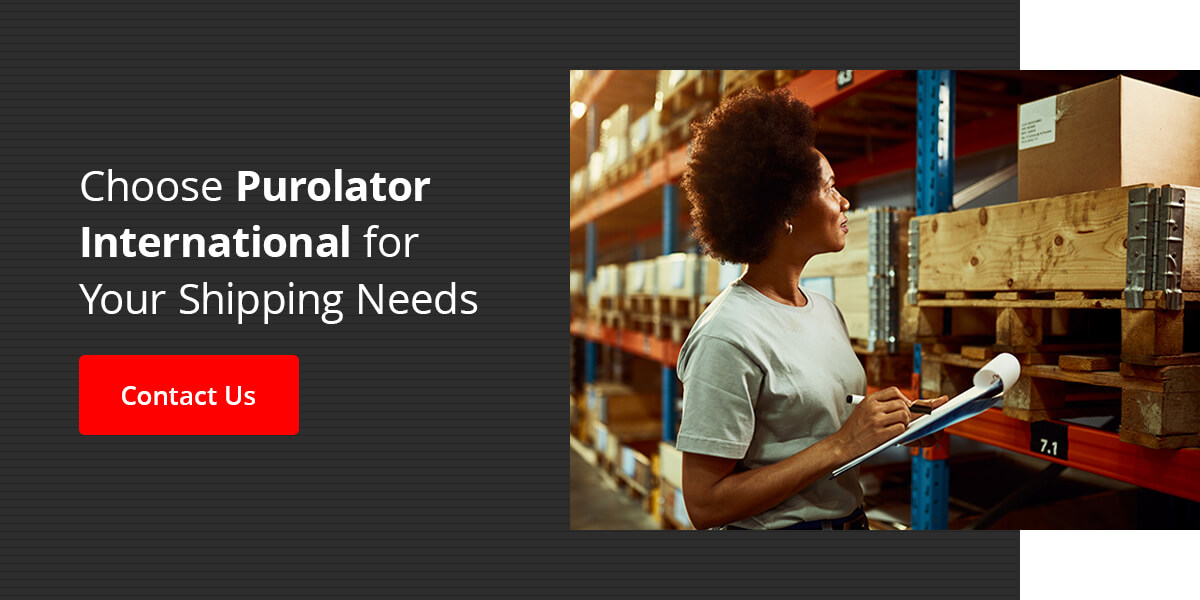Blog
How to Optimize Your Reverse Logistics Process

Reverse logistics is how businesses recoup the value of their returned products. Consumers return products for numerous reasons, including product damage, poor condition or simply changing their minds about wanting a product. Businesses must be prepared for returns and have a reverse logistics process, which is just as important as forward or traditional logistics.
Companies that ship to other countries must also work out their reverse logistics plan before distributing products worldwide since return shipments will need the correct labels and customs documents. Learn more about the impact of reverse logistics in the supply chain environment and how you can optimize your processes.
- What Is Reverse Logistics?
- Importance of Reverse Logistics
- Types of Reverse Logistics in Supply Chain Processes
- Tips to Optimize Your Reverse Logistics Process
- Choose Purolator International for Your Shipping Needs
What Is Reverse Logistics?
Reverse logistics is a supply chain management method involving moving products from the consumer back to the manufacturer or seller. After a customer receives a product, they may want to return or recycle it, which is where reverse logistics comes in.
Reverse logistics starts at the consumer rather than the manufacturer. The product moves backward through the supply chain, from the consumer to the distributor and finally to the manufacturer. Reverse logistics can also include processes where the manufacturer is responsible for the disposal of the product, which can consist of resale, refurbishing or recycling.
This process generally follows the same five steps:
- Processing returns: The reverse logistics process starts when the end user indicates they want to return a product they’ve received. This step includes approving refunds, scheduling shipments or replacing faulty merchandise.
- Dealing with returns: Once you’ve received your product, it’s essential to inspect it and determine its return category. You can sort products by category, such as reselling as new, fixing, reselling as used, refurbishing, recycling or scrapping.
- Keeping returns moving: It’s essential to keep the returns process moving. Send items that can be repaired or refurbished to your internal repair department or a third-party service. If a returned item can’t be repaired, you can sell any functional parts.
- Recycling goods: If you can’t fix any parts of the returned items and they can’t be resold or reused, you can send the product to recycling.
This process helps businesses gain additional profits from products that customers return.
Importance of Reverse Logistics

Reverse logistics in the supply chain is essential in many businesses since it helps maintain an efficient flow of products and goods. Reverse logistics helps reduce costs and risk, creates value and finishes a product’s life cycle.
This process generates value by reducing waste and turning it into sales, increasing sustainability practices. Reverse logistics can also help build consumer trust when they know your products won’t go to waste. Additionally, effective reverse logistics strategies can also reduce distribution and storage costs. Rather than letting returned goods end up in landfills or taking up space in storage facilities, these products can be discounted and resold.
Reverse logistics can also boost the efficiency of the traditional supply chain, which benefits everyone involved. The process can help maximize your business’s profitability ratio, even if you’re inexperienced.
Types of Reverse Logistics in Supply Chain Processes
There are different types of reverse logistics, also called reverse logistics components. The various components of reverse logistics include the following:
- Returns management: This type of reverse logistics is the most used component. Returns management involves handling customer returns, which should be a seamless experience for the consumer to maintain brand loyalty.
- Return policies and procedures: This component measures all returns. Customers and employees must closely follow policies and procedures. This component helps consumers know what to expect during the return process.
- Packaging management: Reusing packaging when possible reduces waste and saves money that would otherwise be used to purchase new packaging for returns.
- Refurbishing or remanufacturing: This process involves reconditioning products to prevent manufacturers from losing money on defective products, which also helps reduce waste.
- End of service life: Distribution centers or end consumers return products at the end of their life cycle to the manufacturer, who disposes them using the proper methods.
- Unsold products: This process involves resellers returning unsold products to the manufacturer. Resellers return products due to poor sales, delivery refusal or other factors.
- Repair and maintenance: Some returned products, such as electronics, need to be repaired or warranty work completed before they can reenter the supply chain.
- Rental equipment: Leased or rented products are sent back to the manufacturer. These products are redeployed, recycled or disposed of.
- Delivery failure: Sometimes, products cannot be delivered, so they return to the fulfillment center to be shipped to the manufacturer. However, businesses can remedy these problems and resend the product for re-delivery.
Tips to Optimize Your Reverse Logistics Process
Reverse logistics is essential for nearly every business, so optimizing the process is critical so you can respond efficiently and quickly while reducing costs. Consider the following tips to help you optimize your reverse logistics process:
1. Track and Use Your Data
You should collect all data related to your returns processes to understand why consumers return products. You can use this data to make necessary adjustments in your products, sales and logistics processes and to promote products that get returned the least.
2. Evaluate Existing Return Policies
Review and revise your existing return policies if needed to ensure they are clear to the consumer and address the returns’ root cause. How your business handles returns can be what sets you apart from competitors.
3. Collaborate With Your Suppliers
Another way you can optimize your reverse logistics process is by collaborating with your suppliers to ensure returns are a smooth and integrated process for customers. You don’t want consumers to struggle through this process, which could jeopardize their brand loyalty.
4. Track Products Throughout the Supply Chain
Track your products throughout the supply chain, from the raw materials to final delivery to the consumer and back again if needed for returns. Tracking ingredients or products that may need recalls allows you to reduce them without affecting entire lines and lets you be more selective.
5. Centralize Return Locations
A centralized return location makes it easier to sort through returned products and identify the next best step for each item. A centralized location also makes it easier to reclaim product value after it’s been returned. If you can’t create a separate centralized location, dedicate a portion of your warehouse or factory to handle returns.
6. Examine Your Logistics and Transportation Processes
Your business should regularly review the forward and reverse processes for logistics and transportation. Consider if you can integrate these processes into your returns processes. For example, if delivery drivers drop off full pallets of products, determine if they can load empty pallets. Integrated processes can help you save time and money by reducing the overall number of trips.
7. Automate Your Processes
Another way to optimize your return processes is by using software to automate and streamline your operations. For example, some software can provide business analytics, track asset recovery and help manage refurbishment.
Choose Purolator International for Your Shipping Needs
If you’re a business with a high volume of shipments moving from the United States to Canada, Purolator International can help. We offer hassle-free freight and parcel shipping solutions using our built-in logistics network to help you manage your most important shipments. We can also work with your existing shipping platform or third-party provider to make the transition seamless. We’re experts in cross-border regulations, ensuring your shipments move smoothly from one country to the next.
We provide several transportation modes, including land and air, to ensure complete coverage of Canada and the United States. We can help multiple shipments clear customs as a single shipment, streamlining your operations. Contact us today to learn more about the benefits of our services.
